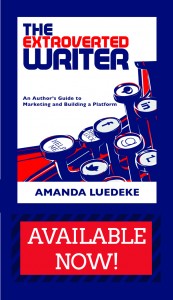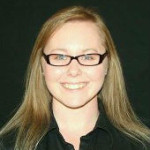Thursdays with Amanda: Tapping into Small Reader Demographics
 Amanda Luedeke is a literary agent with MacGregor Literary. Every Thursday, she posts about growing your author platform. You can follow her on Twitter @amandaluedeke or join her Facebook group to stay current with her wheelings and dealings as an agent. Her author marketing book, The Extroverted Writer, is available from Amazon and Barnes & Noble.
Amanda Luedeke is a literary agent with MacGregor Literary. Every Thursday, she posts about growing your author platform. You can follow her on Twitter @amandaluedeke or join her Facebook group to stay current with her wheelings and dealings as an agent. Her author marketing book, The Extroverted Writer, is available from Amazon and Barnes & Noble.
The typical reader is a middle-aged, white female. We’ll call her Sally.
A vast majority of fiction is created with Sally in mind. Take the entire romance genre, for example (barring, of course, African American, multi-cultural, and some LGBT romances). Not to mention the mystery genre. The women’s fiction genre. The erotica genre. A vast majority of the historical genre and even a chunk of the YA genre are both created and marketed with her in mind.
It isn’t until we get to that historical genre, and then suspense, and then thrillers, and then horror and speculative fiction that we start to see books that are marketed to Sally, as well as … Sally’s husband. We’ll call him Gunther.
I’m no mathmetician, but I know this…a whole freaking lot of the fiction books produced are produced with Sally in mind. And of the books not created with Sally in mind, a super crazy majority of those are intended for Gunther.
So where does that leave the author who writes for a narrow demographic?
My honest opinion? It’s almost easier to tap into a narrow demographic than it is to tap into a broad one. Think about it like this…
A billion (hyperbole) books come out every year with Sally in mind. I mean granted, there are a ton of Sallys in the world, so it makes sense there are lots of books to choose from. BUT each Sally still needs to make a decision to read one book at a time. And when there are a billion books to choose from, that’s a lot of pressure on the author, the book’s marketing team, and the publisher. How do you make your book rise above when there are 999,999,999 others that Sally would also enjoy?
Now let’s talk about Pearl. Pearl is a twenty-three-year-old African American female who enjoys YA fiction. But what she’d really enjoy? YA fiction with multi-cultural protagonists.
How many multi-cultural YA books can you think of? They’re out there…they’re just not as overwhelmingly plentiful.
The market for this is smaller, yes, but it doesn’t mean that readers like Pearl don’t exist…that they aren’t there hoping to come across the very book they’re looking for.
And here’s the best part…the way to reach Pearl is really no different than the way to reach Sally. Pearl can still be attracted to books by the right guest posts on the right blogs and the right reviews in the right magazines and the right buzz on the right message boards and in the right book groups.
The cool thing, though, is Pearl doesn’t have 999,999,999 other books to choose from. So when you approach her with your book, chances are she’ll be interested immediately.
So there you have it…while it may take a bit more legwork to uncover where smaller demographics congregate, I firmly believe that the results of your marketing efforts will be worth it. Because while Sally has learned that she can be picky, Pearl has learned that when the right fit comes along, SHE NEEDS TO READ IT.
I think most authors face the issue of tapping into smaller reader groups at one point or another…maybe it’s a sub-genre you’re dealing with? Or a unique theme? What are your experiences infiltrating these groups? What are your struggles?


8 Comments
SFR may be the most niche of niche romance sub-genres. But the upside is the readers are relatively easy to find, few though they are, and they’re very adventurous. Plus we have authors banded together constantly pushing the edges of reader outreach and luring in new readers. It’s very exciting.
And in a way, very freeing. SFR has no limits on what you can and can’t do, really. You’re restricted only by what kind of publishing journey you’re willing to travel.
Excellent post, and great points. Then the challenge is finding the Pearl’s in the world and reaching them.
They’re out there…and as I mentioned in the post, I don’t think they’re as hard to find as we may think. And once you’ve found them, you’re golden!
What you haven’t mentioned is that Sally and Gunther live in America, and there’s a good chance Sally has never travelled outside the US. Statistically, she may never have travelled outside her home state. Publishers recognise this, and set a lot of books in small-town America (whether contemporary or historical).
I live in New Zealand and a lot of my writer friends are Australian. We’d like to read more books set outside small-town America. Like books set in Australia or New Zealand or the Pacific Islands or … People are writing them. But marketing is the challenge, especially when it’s a very small market.
Iola, We just traveled New Zealand for five weeks and fell in love with the country and its people. One of the books in my Casey Stengel mystery series will be set in New Zealand. I need to finish the one set in Ireland first. I’m trying to use our extensive travel experience in my writing and usually include places out of the US by having my character travel sometime during the story.
This is Sally (not married to Gunther, thank goodness!), and I’m with you, Iola. I’m so tired of small-town America fiction, and I live in small-town America! I want to read fiction that takes me to places and lifestyles I can never live. So I guess you and I are more like Pearl who’s looking for a narrower type of fiction than “Sally.” 🙂
Amanda, it’s so encouraging to hear that writing to a narrow demographic might be easier. I write realistic fiction set in big cities, and I’m well aware that that’s more niche than CBA fiction tends to be.
US publishers don’t see the sales numbers on books set outside the US, which makes sense. Their primary market is comprised of US citizens, not Australian or New Zealand citizens. Sounds like there’s an opportunity for a start-up Australian or NZ publisher to meet a need?
There are a couple of small Australian publishers (e.g. Even Before Publishing, who are on the ACFW Recognized Publishers list and who have published some very good novels. I particularly liked A Simple Mistake by Andrea Grigg, which reminded me of Carla Laureano’s Five Days in Skye).
But the problem for the small Aus/NZ press is the same as for any other small press or self-published author: getting visibility for their books. The Aus/NZ market is very small (less than 20 million combined population, of which maybe 5% are regular church attenders, and only a small percentage of those are avid fiction readers). It can be difficult to find local content in Australian and NZ Christian bookshops – they are selling and promoting mostly US content.